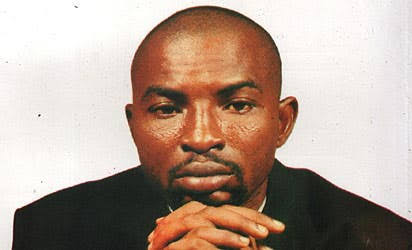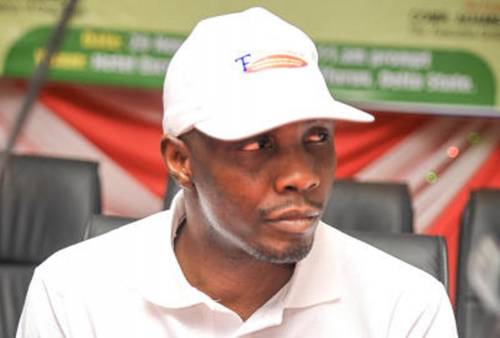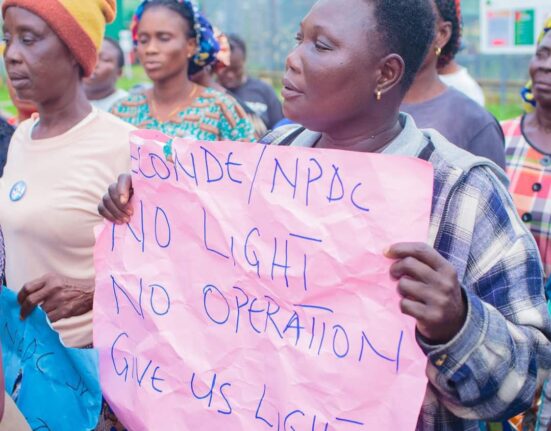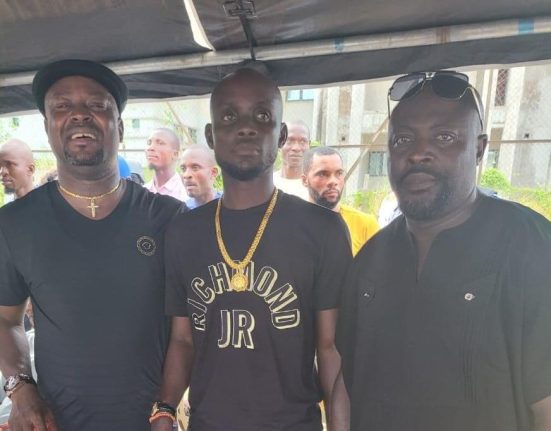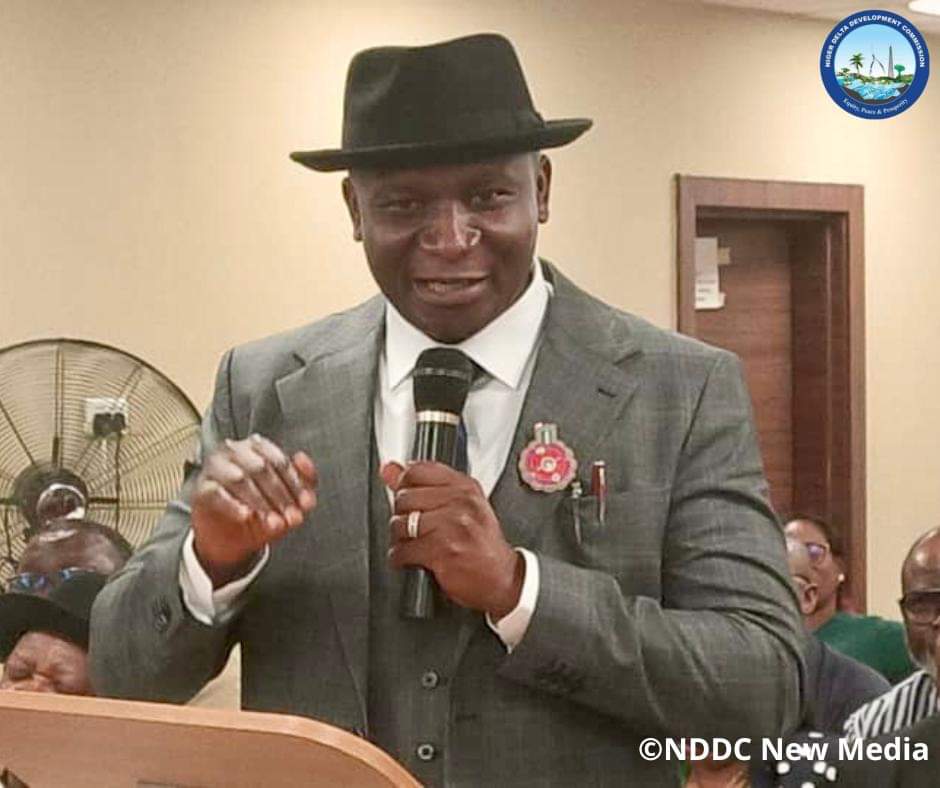BY EKANPOU ENEWARIDIDEKE
Carnage, Massacre, Rape, Wounded, Reconciliation, Reconciliation, Exploitation, Manipulation, Propaganda. These are aromatically dangerous, repelling, antagonistic and disgusting words whose echoes poignantly bring to the mind the inanities of the 1994 Rwandan genocide – a fratricidal genocide worsened by the dearth of a transparent reconciliation and peace process conceptualised to bring the Hutus and the Tutsis together and bury the notorious genocide in the river of forgiveness and forgetfulness – which propelled Veronique Tadjo’s journey to Rwanda.Also brought to the mind is the appalling failure of man to be taught by the lessons of the Nigerian Civil War of 1967-70 which would have been enough to guide the Rwandans away from the issues that made the genocide possible.
Veronique Tadjo’s journey to Rwanda outlined in her book,The Shadow of Imana, is conceptually purposed to bring healing to the genocidal wounds of the country.That the wounds of Rwanda’s genocidal war are still ululating for healing assail her sense of humanity and responsibility as a writer.To have a true picture of the genocide in terms of the causative factors, the whole gamut of the carnage, the massacre, and the modalities taken to heal the suppurating genocidal wounds, Tadjo journeys to Rwanda with her purpose clearly captured this: ‘ I could no longer keep Rwanda buried inside me.I needed to lance the abscess, lay bare the wound and bandage it.I am not a doctor, but I could still try to administer first aid to myself'(The Shadow of Imana 3).
A logically distilled thinking from historical awareness would have simply taken a clear channel that the cumulative carnage from the Nigerian Civil War and the 1994 Rwandan genocide should have been a sufficient guide for the people of Odi in Bayelsa State where twelve soldiers were killed by civilians on 4 November 1999, at Zaki Biam in Benue State where nineteen soldiers were killed by bloody civilians on 10 October 2001 and for the people of Okubama(Okuama) in Delta State where seventeen soldiers were killed by bloody civilians on 14 March 2024 and respectively attracted the military bees in each incident bound to provoke genocidal response from the Nigerian soldiers if they were not professionally composed and guided attitudinally. All these valuable lessons from history were thrown away anytime they came in handy as would have been expected in the recent Okuama incident in Ughelli South Local Government Area of Delta where seventeen soldiers were killed by misguided civilians.
The obscenities of the 1994 Rwandan genocide – which are emanations from non-alignment with the derivable valuable lessons from the Ibo pogrom during the Nigerian Civil War of 1967-70 – by their sheer crudities and barbarities, have the potential to cause universal outrage and shock anywhere on earth.Critically built here using postcolonialism, this critical journey of mine traces the horrors of the genocide, the causative agents, the ineffectuality of the reconciliation and peace process and the imperilled waiting Rwandan future which is bleak in Veronique Tadjo’s The Shadow of Imana. This critical journey also shows a gaping bleakness in the Rwandan future bound to be removed only if there is justice in the reconciliation and peace process.Whether or not Rwanda will rise to its former glory depends on how well the reconciliation process is handled to bring together all the victims and let their painful suppurating wounds got from the genocide completely healed on the altar of love and forgiveness coupled with a total rejection of the instigative, divisive and false narrative of European historians on the aboriginal roots of the Tutsis.
Every work – fiction or non-fiction – has a centre around which it is thematically built to guide humanity. Characteristically, in Veronique Tadjo’s The Shadow of Imana, the Rwandan genocide of 1994 is the centre around which the thematic architecture is built by the author. As thematically built, the work showcases the horrors of the genocidal war, the sufferings and pains of the dead and the living, the reconciliatory efforts, the challenges of the reconciliatory efforts, the perpetrators of the genocidal barbarities, the genocidal period, the call for justice, the likely disintegration of Rwanda in all her components that generate oneness without justice and genuine reconciliatory efforts. The journey of the author to Rwanda, ably assisted by reports and response of victims and her own fact-based evaluative views while on the Rwandan soil, engaged in investigative conversations with the victims of the genocidal war, confirms authoritatively that there was indeed a Rwandan genocide in 1994 as there was indeed a country in Chinua Achebe’s portrait of the Biafran struggle in his work,There was a Country A Personal History of Biafra.Tadjo’s investigative confirmatory portrayal of the Rwandan genocide of 1994 is critically looked at here using the postcolonial lens which refers ‘to literature emanating from or dealing with the peoples and cultures of lands which have emerged from colonial rule (normally, but not always, relatively recently) but it can also be used to imply a body of theory or an attitude towards that which is studied, (Studying Literature 193).
Post colonialism as a critical theory is more appropriate to the critical explication of a work like The Shadow of Imana by Tadjo because the theory ‘has created institutional space for the study of a wide variety of non-canonical literatures, and has given academics a focus for the development of new areas of study’ (194).
From critical analysis extended mainly to Tadjo’s The Shadow of Imana, the Europeans are guilty of involvement in the Rwandan genocide through deliberate narrative colouration and manipulation.Rwanda got independence on 1 July 1962 though it was on 19 December 1963 she formally had independence from UN under Belgium administration. Full autonomy in the real sense of the word independence only came the way of Rwanda in 1963. Since 1994 it has been chorused everywhere that there was a genocidal war in Rwanda targeted at the Tutsis and the moderate Hutus. Accusations, counter-accusations and denial of accusations and culpability are characterizations of the Rwandan genocidal war.
The author journeys to Rwanda to have an authoritative view on the genocidal war. Various places and sites are visited in Rwanda where the carnage occurs coupled with investigative conversations had with people.
From Ntarama Church with a record of 5,000 dead, Tonta locateli with a record of the first massacre of the Tutsis in 1992, Nyanza the Royal city where all vestiges of nobility have been wiped out during the successive confrontations between ‘feudal’ Tutsis and the Hutu ‘masses’ (The Shadow of Imana 18), Byumba where the barbarities of the genocide let loose on Therese, Jean-Baptiste (Therese’s husband), Constance(Therese’s sister) and Isaac (Therese’s son) are echoed; the pathetic story of Consulate whose father is dead and her own mother and brother imprisoned, her two sisters in the city and Consulate on exile; the story of the sooth-sayer and the stubborn head of the dead causing rain to fall torrentially on the living as a wake-up call to embrace peace and love and how the rain stops after the diviner has performed the chicken ritual to placate the dead; the pitiable story of Saro whose husband Romain commits suicide after the war when accused of genocidal involvement; the rape of Anastasie by her brother Anastase at knife-point, Anastasie’s resistance struggle and how she dies; the tragedy that befalls Karl’s family – how Karl’s wife Annonciata and her son are found at a refugee camp by the Red Cross, Annonciata raped by militiamen and men guarding them as a condition for her own son not to be killed, how she later had AIDS and died; the story of the murder of Seth’s father and mother and how his paternal uncle sends him abroad to study and later comes to marry Valentine in Burundi; the death of the Dian Fossey Foundation through the murder of Dian Fossey by poachers (Hutu rebels); the genocidal atrocities perpetrated by Hutu rebels, Interrahamwe, the ordeal of the Zairean woman who looks like Tutsi, how her husband Etienne and son are murdered by Hutus; she is raped by Hutu soldiers though rescued by RPF soldiers; the story of the pastor in whose hands four children are entrusted but the militiamen strike and kill the children, forcing the pastor to kill one with his own hands; stories of people committing suicides in the prison; the former RPF soldier now a prison guard kills four prisoners and himself on the information that Gacaca (return to traditional justice) is about to take place; stories of improper trial of perpetrators and imprisonment of the condemned, prisoners kept in crowded room; even people who plead guilty are still condemned to death; stories of false testimony, false accusations, stories of partial trial of people while high-ranking officers arrested and tried in the International Court of Arusha are not condemned to death; stories of prisoners forced to labour on farm for the benefit of the officers in charge; the story of Josephine whose two children – Philomena (daughter) and Gratian (son) – reveals that politicians are the cause of the genocide; the story of the Seven Wonders made up of seven guys out of which only four are left – Damien and Valens dead and Jean de Dieu having left the country – the Seven Wonders not tainted by the barbarities of the genocide and the ten commandments of the Hutus; the story of the division between the Hutus, Tutsis and the Twas traced to 1990 and that some massacres occurred in 1959 when the king died and that when the president’s plane crashes in Kigali on 6 April, the murder does not start immediately; the story of Camp Kibeho (22 April 1995) where government forces, eager to get rid of sprawling camps where militiamen plan to organise a genocide of Tutsis and moderate Hutus, attacks the camp leading to death of five and eight thousand and hundreds wounded mostly from among the Hutus who machete one another between those ready to leave and those ready to stay and the stampede from the fired shorts.
Kibeho has over eighty thousand refugees where Hutus who fear reprisal converge, and after the carnage two hundred and fifty thousand Hutus are compelled to go home; the story of the confession of sister Agatha shows that evil is man-made as well as good and that the people should lay down their arms, embrace peace as good and allow the wounds to heal and that if the voices of the dead are listened to, peace will come. To her the darkness that has concealed the sunlight and the shadow now cast on the earth is man-made and can be reversed if there is genuine attitudinal change and the story clearly told, even in THE SECOND RETURN , shows danger walks over the surface of Rwanda.
Scenes of genocide are given a kaleidoscopic coverage in the book through the journey of the author who holds talks with different people on the genocidal war. From the reports and response of the people it is clearly established that the Rwandan genocidal war is traced to Europeans who drum up a narratively cast propaganda that the Tutsis are not indigenous to Rwanda. In the narrative of the European historians who are majorly Belgian, the Tutsis are not from Central Africa but from Tibet or Egypt. The Tutsis are also historically linked to Elhiopia – and this Ethiopian attribution appears most tenaciously held, probably based on the fact that there is a similarity between the traditional costumes of Ethiopia and the Tutsis. This historical linkage of Tutsis to ethiopia narratively anchored by European historians begins towards the end of the nineteenth century.
Driven by this Eurocentric theory, the Tutsis are thrown into the Kagara river to flow to Ethiopia during the genocide. This is foregrounded in the book thus: ‘One of the reasons for the persecution of the Tutsis comes from the theories suggested by European historians, who, towards the end of the nineteenth century, attributed to them foreign origins. According to those historians … were not originally natives of central Africa’ (The Shadow of Imana 22).
Rwanda being under Belgian domination and exploitation before the 1994 genocide, the Europeans cunningly manipulate the narrative to poison the minds of the Hutus against the Tutsis so as to cause dislocation in the social and economic life of the Rwandans and tacitly perpetuate their targeted exploitation and domination. This is what Abrams and Harpham stress in their critical postcolonial view: ‘Postcolonial studies sometimes also encompass aspects of British literature in the eighteenth and nineteenth centuries, viewed through a lens that reveals the ways in which the social and economic life represented in that literature was tacitly underwritten by colonial exploitation’ (A Glossary of Literary Terms 306).
There are clear indicators that it is a deliberate agenda of getting all Hutus involved in the genocide whether they are ideologically ready or not so that it would appear in the global eye that responsibility for the genocide is a collective one, not masterminded and sponsored by only a minority Hutus privileged to be in power. Both the moderate Hutus and the Hutus are compelled by the Hutu rebels to murder Tutsis when caught.This is why the pastor in whose care and protection four Tutsi children are placed is compelled by the Hutu rebels to kill one of the children with his own hands and casuistically drive home their propaganda of collective responsibility for the Rwandan genocide.
Critically privileged here, as guided by The Shadow of Imana, it demands and merits the admission that the senseless and barbaric killing of Tutsis is not an offshoot of a collective resolve by all the Hutus but it is rather a plot by few Hutus to commit genocide against the Tutsis and pass it off as a collective action for which all the Hutus must share a responsibility for the genocide.
The relegation of the Tutsis to the background through narrative historical manipulation and mind-poisoning spearheaded by Europeans, followed by the genocidal war waged against the Tutsis by the Hutus is a broad plan to kill and bury the identity of the Tutsis in the politics of Rwanda – which is a programmed identity politics played against the Tutsi ethnic nationality. Dorothy J. Hale critically recognises this thus as a component of postcolonialism: “yet from a different perspective, post-colonial theory may be seen as the culmination of the late twentieth-century preoccupation with identity politics in novel studies'(An Anthology of Criticism and Theory 654).
Perspectives on the Rwandan genocide could be taken from any angle, but where it is critically based on Tadjo’s The Shadow of Imana, the Rwandan Government cannot escape the tag of culpability and involvement.The Rwandan Government manipulates information and propaganda to perpetuate their genocidal pastime. While the genocide is being perfected, the false image publicly created for believability is that the whole thing is a tribal outrage and violence. This falsehood is systematically maintained until the assassination of the Prime Minister, Agathe Uwilingiyimana, alongside ten Belgian soldiers. The interim Hutu Government is a master of propaganda, misinformation and disinformation. It is manipulatively packaged as an ethnic war between Hutus and Tutsis – which is many miles away from the truth. Through sloganeering and deliberate persuasion, money, weapons, alcohol and the radio, they instigate the masses to kill the Tutsis. They sow the seed of hatred among the people as a basis to encourage carnage and claim the national resources for their own selfish ends. The people are deliberately blindfolded to pave the way for exploitation of the masses as it is eloquently sounded by Josephine who is rescued by RPF soldiers alongside others and take to Byumba:’No, it wasn’t an ethnic war, because at the highest level they got together to pillage the country, to look after their own interests. Politicians never tell the truth. They stir up hatred. When the country is poor and the youth are unemployed, they can easily manipulate people making others the cause of their troubles’ (The Shadow of Imana 108).
The Rwandan genocide is not a product of ethnic outrage and violence; it is an evil creation of Rwandans in power who wish to feather their own nests. Even after the genocidal war people’s expectations are high but all hopes and expectations for better things are dashed as corruption, uncertainty and impunity have displaced the clamour for justice, the clamour for promises earlier made to be fulfilled and the ululations for genuine reconciliation systematically ignored. This is the thesis of the Seven Wonders not swayed by the pervasive ethnic propaganda of hatred and the notorious ten commandments of the Hutus:’When the war ended, we thought that everything could at last go back to normal, that we could start again on a better foundation. Not make the same mistakes again. But after a few years, everything seems to be settling back into place: corruption, impunity, uncertainty. Promises are not kept. They vanish one after another. Reconciliation. We need justice. To know that those who should be punished will be punished. But things drag on. It seems as though nothing is moving forward, that gradually everything is falling into oblivion (The Shadow of Imana 110-111).
In the 1994 Rwandan genocidal war unprecedented atrocities are let lose on people, as parents and children are murdered without a prick of conscience and human feelings. Women are raped by both Hutu rebel soldiers and RPF soldiers. However, with the end of the genocidal war there is a clamour for peace, reconciliation and justice. But the Rwandan authorities do not appear keen on the restoration of Rwanda. In the first place the genocide originates remotely from the divisive narrative of European historians on the origin of the Tutsis and when the genocide breaks out, foreign bodies like UN and others could have barricaded the genocidal eruption if there were quick interventions but they only watch the genocidal drama with morbid attention until it has achieved its evil purpose before they intervene with UN, RPF and Red Cross. The Rwandan genocide would not have erupted but for the satanic narrative of European historians and the manipulative gimmicks of the Rwandan Government, neck deep in the carnage by calling it an ethnic violence as a diversionary measure to perfect the genocide.
Both the living and the dead are eager to see the restoration of Rwanda to its former glories after the genocide by privileging peace, love reconciliation and justice over mutual hatred and extermination. Towards this direction, sister Agatha holds that: ‘We must lay down arms and let the wounds heal and scar over', (116). She also echoes the voices of the dead still solicitous about the healing of the wounds and coming together of Rwandans as strongly united people: 'See how life resumes its course. Hear the voices of the dead who are now at peace and sleeping in the wind. They whisper to us that the time for all torment must cease and that the they are ready to withdraw so that the living may take their places' (117). Without genuine attitudinal change to heartily embrace reconciliation and love, it is hopeless for Rwandans because for Agatha: ‘ Darkness has hidden the sunlight and the shadow has engulfed the earth’ because hearts are yet to yield way to embrace the new path of peace, reconciliation and restoration, though she is still optimistic about the future as her words reveal thus: ‘We shall emerge from this long and terrifying eclipse’ (117)
The reconciliatory processes in Rwanda are yet to be effectively and transparently handled. For Rwanda to be restored to the former glories, the reconciliatory process must be well handled. Tadjo holds the view that anger still lurks in Rwanda except the process of reconciliation is handled without the intrusion of divisive forces: ‘We need to understand, to analyze the mechanisms of hatred, the words that create division, the deeds that put the seal on treason, the actions that unleash terror’ ,(118).
Unambiguously expressed in THE SECOND RETURN is the fact that Rwandans should know that there are still fundamental issues to be addressed bordering on the peace of the country. Rwandans should understand that the country is still imperilled without genuinely addressing the issues of justice and reconciliation and the issues that bond the Hutus and the Tutsis together in the country because echoes of danger and violence are still everywhere in Rwanda. This is why this cautionary message of the author to Rwandans is very important: ‘ We need to understand. Our humanity is in peril’ (118).
Tadjo sees no virtue or wisdom in sitting idly by and merely listening to the stories of the Rwandan genocide. Like in the horrible Biafran days which provoked a visit from Geoffrey Hill, the British poet, Douglas Killam, the Canadian literary critic and scholar, Conor Cruise O’ Brien and Stanley Diamond in search of a credible authoritative view on the Nigerian civil war(There was a Country 106), Veronique reasons rightly that a visit has to be made to the sites of the genocide, people engaged conversationally on the authentic account of the genocide, her evaluative position drawn from the cumulative investigative engagements and interactions with the victims and critical projection as to whether it is optimism or pessimism that characterises the efforts of the Rwandan government in their pursuit of justice and reconciliation after the Rwandan genocide.This runs parallel with Chinua Achebe’s perception of the writer in the society when the moral, political, cultural and social fabric or architecture of one’s society of sojourn or origin is endangered, particularly in the face of Western encroachment or inanities of a nation’s government ruthlessly perpetrated through narrative or actions taken.It is the writer’s moral obligation to respond to such ugly developments as it is done by the author in The Shadow of Imana which re-echoes Achebe’s conviction that: ‘My own assessment is that the role of the writer is not a rigid position and depends to some extent on the state of health of his or her society.
In other words, if a society is ill the writer has a responsibility to point it out. If the society is healthier, the writer’s job is different'(57).
Characteristically,Tadjo has pointed out that Rwanda is endangered even after the end of the genocide because the basic issues bordering on justice and genuine reconciliation have not been addressed with the transparency demanded by the victims and the dead.Cast categorically in Tadjo’s The Shadow of Imana is that there was a government-provoked genocide in Rwanda in 1994 drawn remotely from the instigative, rabble-rousing, divisive and false narrative by European historians on the aboriginal roots of the Tutsis, with no transparent and dependable framework yet for integration, placation and reconciliation of the affected in the country.Therefore, as a derivable historical lesson, let the waters of justice pour upon Delta State in the search of the civilian culprits who heartlessly masterminded the killing of seventeen soldiers at Okubama (Okuama) in Ughelli South Local Government Area on 14 March 2024 so that innocent Urhobo civilians are not negatively affected and the dead soldiers excited and proud in their graves that their colleagues have proportionally avenged for their reckless killing at a time they were merely on a peace mission.
Enewaridideke, writes from Akparemogbene, Delta State.
Support Quality Journalism in the Niger Delta Region
Join us in our mission to bring development journalism, cultural preservation, and environmental awareness to the forefront. Your contribution makes a difference in the lives of the people of the Niger Delta. Donate today and be a part of the change!


